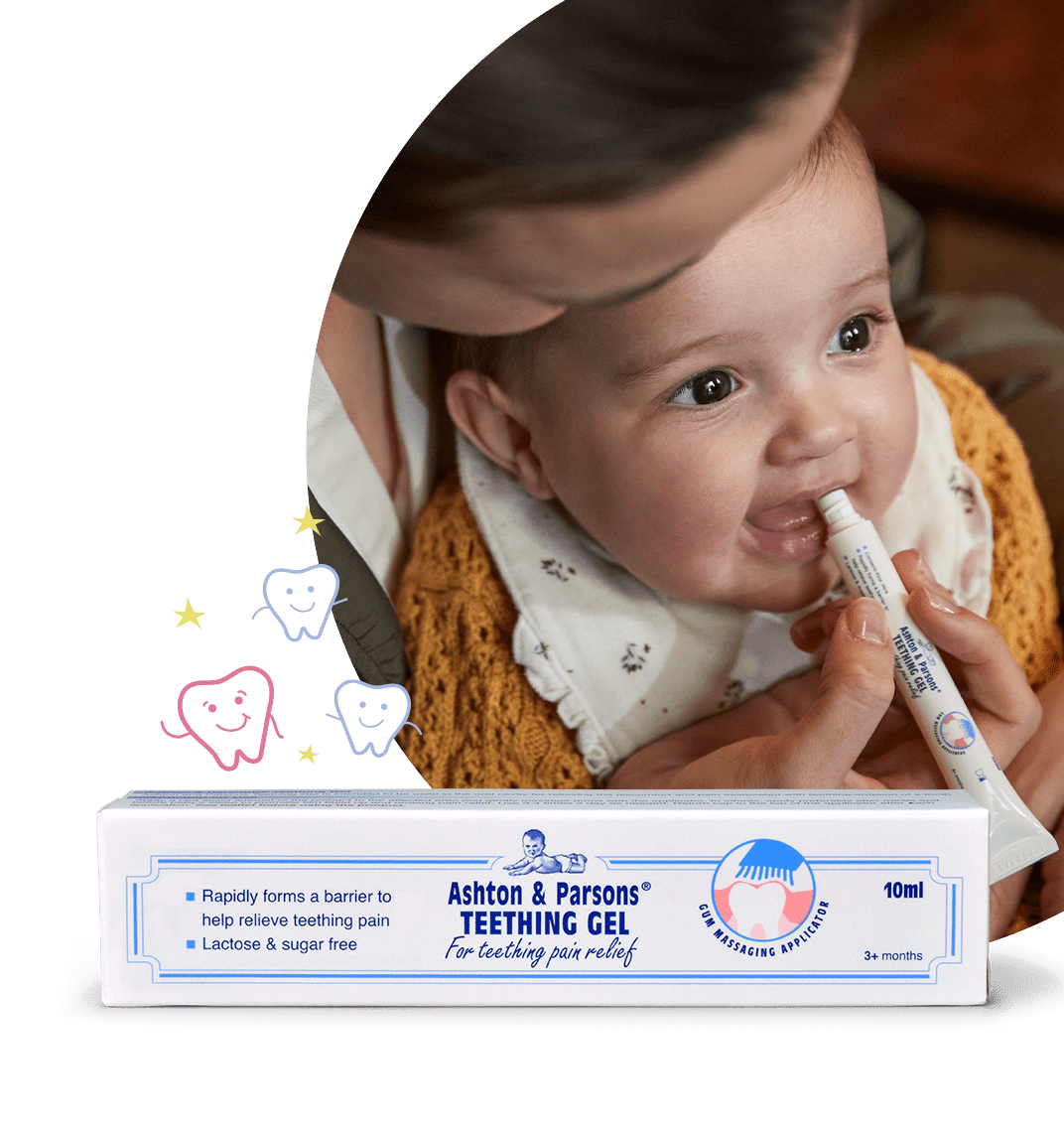Is it teething or is it trouble?
Teething can be a tough time for you and your little one. The symptoms of teething are easy to recognise and knowing what to look out for can help you to better soothe your baby’s woes. Equally, it is important to know what symptoms could indicate something more troubling than just teething. For 150 years Ashton & Parsons has been used to help mums to relieve the symptoms of teething. We’ve put together this handy guide to make spotting the difference between teething and trouble a little bit easier:

1) Gnawing at objects and fingers:
If your baby suddenly starts to bite, chew and gnaw on solid objects or their fingers, it’s very likely that a tooth is about to break through their little gums. Chewing helps to relieve the pain of cutting the new tooth.
Could this be trouble?
No, although mouthing at objects isn’t necessarily related to teething. Until your little one is about seven months old they won’t be able to use their hands to discover objects – so they will use their lips, tongues, mouths and gums instead.
2) Loss of appetite:
Sore gums can make feeding tough! During teething your little one might seem to be less hungry than usual or reject their feed. In some cases, the bottle or nipple may cause discomfort when feeding a teething child. If this appears to be the case, you may want to try a differently shaped teat or feed from an open cup.
Could this be trouble?
Yes, so continue to monitor your baby’s appetite. If the loss of appetite is related to teething, it will be short lived and fluctuate with the discomfort. However, if your little one’s loss of appetite continues for a couple of weeks or is accompanied by a fever, rash, diarrhea or constipation you should call your doctor.
3) Pulling or rubbing ears:
It’s fairly common for babies to pull or rub their little ears during teething. The heat from their gums can sometimes reach their ears and this new sensation can be uncomfortable.
Could this be trouble?
Yes, ear pulling could also indicate an ear infection. If this is the case your little one will probably also show some cold symptoms and will seem to be in more discomfort when lying down. Watch out for a raised temperature and/ or redness of any part of the ear and check with your doctor, health visitor or local pharmacist if you aren’t sure.
4) A raised temperature:
During teething you might see your child’s temperature rise slightly. A temperature of anything up to 36 – 37 °C is normal; the NHS suggests that anything higher than this is feverish.
Could this be trouble?
Yes, a temperature over 38°c is indicative of a fever. If this is the case, we recommend you speak to a doctor immediately.
5) Sore or red gums:
This is one of the tell-tale signs of teething and is caused by new teeth trying to break through their little gums.
Could this be trouble?
Yes, although sore gums are one of the most common symptoms of teething and will subside once the tooth has come through. It is possible that your little one may have Gingivostomatitis, which is a viral infection common in children indicated by not only soreness but also visible sores on the mouth and gums. This is a viral infection and will run its course in matter of weeks but it’s important to make sure your baby gets enough fluids despite any discomfort this may cause. While gum disease is much less common in children than adults it is another possible cause of soreness of the gum. Of course, if you’re concerned or worried about your baby, don’t hesitate to contact a healthcare professional.





